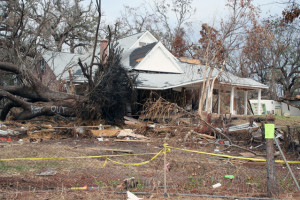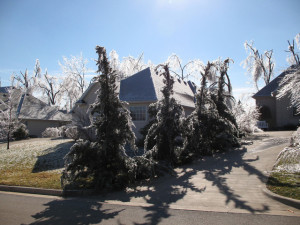A hurricane, tornado or thunderstorm may destroy or damage your home or business. A storm can damage the roof, walls, windows or doors and allow destructive winds and water into the interior.

If your home or commercial building has suffered storm damage, you should take immediate steps to secure the property to prevent injuries and mitigate further damage by putting a tarp on the roof or plywood over a broken window.
Next, you should document the extent of the damage. Take photographs and videos and prepare a written list of everything that has been damaged by the storm. If there has been significant damage to the roof or exterior, you may need to call in a contractor who can inspect the structural damage and provide an estimate for repairs. Also, if the building has suffered previous damage, try to locate any information related to those repairs. You want to be able to establish the “pre-loss” condition before filing your claim.
With storm damage, it’s usually best to report a loss within one or two weeks of its occurrence. That gives you time to gather the evidence.
There are multiple types of storm damage and you need to file the correct type of claim (water damage, hail damage, hurricane, or flood claim) that is applicable to your situation.
Obtain a certified copy of your insurance policy.
Review your policy so you can fulfill all your responsibilities within the allocated times.

General Public Adjusters can help you assess the damage and document your claim in order to maximize your eventual settlement. Otherwise, your claim may be denied, delayed or minimized by the insurer.
Request that your insurance company adjuster use thermal or infrared imaging or moisture mapping technology to diagnose and document the extent of water damage inside your walls and roof.
Obtain three estimates from reputable, licensed contractors for the costs to repair or replace damaged property.
In any case, it’s important to talk with the insurance company before you begin repairing the property. The insurer will want to inspect the damage “as is,” and any premature repairs could result in a smaller settlement. You also should wait to being repairs until you and your insurance company agree on the value of the covered loss.
Keep documentation of all correspondence (letters, emails, telephone conversation notes, meeting notes, etc.) with your insurance company and representatives.
Because repairing storm damage can be expensive, particularly if the property is a total loss, it’s important to have General Public Adjusters on your side – right from the start!
Contact a Public Adjuster if your storm damage claim has been underpaid, delayed or denied.


